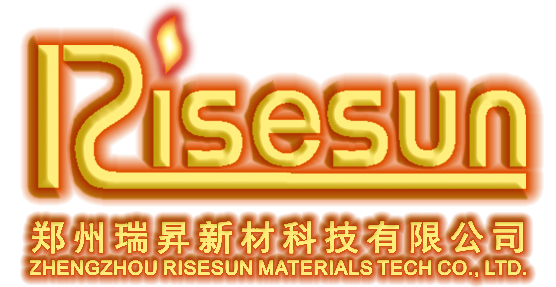23
2025
-
05
The Latest Innovations in SIC Heaters: Exploring Their Advantages and Applications
Silicon Carbide (SIC) heaters are increasingly becoming a favored choice in various applications due to their impressive performance characteristics and technological advancements. As industries seek more efficient and durable heating solutions, the newest SIC heaters are designed to meet these demands with a range of innovative features. One of the primary advantages of the newest SIC heaters is
Silicon Carbide (SIC) heaters are increasingly becoming a favored choice in various applications due to their impressive performance characteristics and technological advancements. As industries seek more efficient and durable heating solutions, the newest SIC heaters are designed to meet these demands with a range of innovative features.
One of the primary advantages of the newest SIC heaters is their exceptional thermal conductivity. Unlike traditional heating elements, SIC heaters can reach high temperatures rapidly and maintain consistent heat distribution. This feature is particularly valuable in industrial processes where precision and uniformity are crucial for product quality. The ability to withstand extreme temperatures also makes them a reliable option for high-temperature applications, such as metal processing, ceramics, and semiconductor manufacturing.
Moreover, SIC heaters are known for their efficiency. They can operate at lower power levels while delivering the same heating output as conventional heaters. This energy-efficient performance not only reduces operational costs but also minimizes environmental impact, aligning with the growing emphasis on sustainability in industry practices. Additionally, the long lifespan of SIC materials reduces the frequency of replacements, further contributing to cost savings over time.
The newest SIC heaters also embrace advanced technologies such as integrated control systems and smart heating capabilities. These features allow for precise temperature regulation and real-time monitoring, enhancing operational efficiency and safety. Users can easily customize heating settings according to specific requirements, making SIC heaters highly versatile across various applications.
In the realm of applications, SIC heaters are finding their place in diverse fields. In the semiconductor industry, for instance, they play a critical role in processes such as crystal growth and wafer fabrication. Their ability to provide stable and uniform temperatures is essential for achieving high-quality semiconductor products. Similarly, SIC heaters are utilized in the production of ceramics, where uniform heating is vital for achieving desired properties in final products.
Furthermore, SIC technology is making strides in the automotive and aerospace industries. These sectors require heating solutions capable of withstanding harsh conditions while providing consistent performance. The new generation of SIC heaters meets these criteria, offering a reliable heating solution for various components, including exhaust systems and engine parts.
In conclusion, the newest SIC heaters represent a significant advancement in electric heating technology, offering unparalleled efficiency, durability, and versatility. As industries continue to evolve and demand more sophisticated heating solutions, SIC heaters are poised to play a pivotal role in shaping the future of electric heating systems. Whether in manufacturing, automotive, or semiconductor applications, these innovative heaters are setting new standards for performance and reliability.
One of the primary advantages of the newest SIC heaters is their exceptional thermal conductivity. Unlike traditional heating elements, SIC heaters can reach high temperatures rapidly and maintain consistent heat distribution. This feature is particularly valuable in industrial processes where precision and uniformity are crucial for product quality. The ability to withstand extreme temperatures also makes them a reliable option for high-temperature applications, such as metal processing, ceramics, and semiconductor manufacturing.
Moreover, SIC heaters are known for their efficiency. They can operate at lower power levels while delivering the same heating output as conventional heaters. This energy-efficient performance not only reduces operational costs but also minimizes environmental impact, aligning with the growing emphasis on sustainability in industry practices. Additionally, the long lifespan of SIC materials reduces the frequency of replacements, further contributing to cost savings over time.
The newest SIC heaters also embrace advanced technologies such as integrated control systems and smart heating capabilities. These features allow for precise temperature regulation and real-time monitoring, enhancing operational efficiency and safety. Users can easily customize heating settings according to specific requirements, making SIC heaters highly versatile across various applications.
In the realm of applications, SIC heaters are finding their place in diverse fields. In the semiconductor industry, for instance, they play a critical role in processes such as crystal growth and wafer fabrication. Their ability to provide stable and uniform temperatures is essential for achieving high-quality semiconductor products. Similarly, SIC heaters are utilized in the production of ceramics, where uniform heating is vital for achieving desired properties in final products.
Furthermore, SIC technology is making strides in the automotive and aerospace industries. These sectors require heating solutions capable of withstanding harsh conditions while providing consistent performance. The new generation of SIC heaters meets these criteria, offering a reliable heating solution for various components, including exhaust systems and engine parts.
In conclusion, the newest SIC heaters represent a significant advancement in electric heating technology, offering unparalleled efficiency, durability, and versatility. As industries continue to evolve and demand more sophisticated heating solutions, SIC heaters are poised to play a pivotal role in shaping the future of electric heating systems. Whether in manufacturing, automotive, or semiconductor applications, these innovative heaters are setting new standards for performance and reliability.



